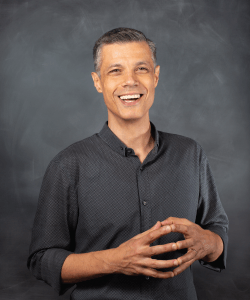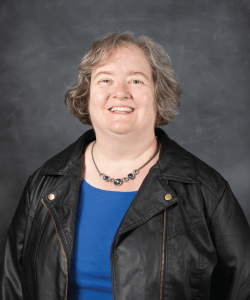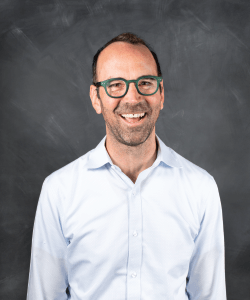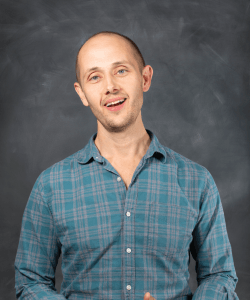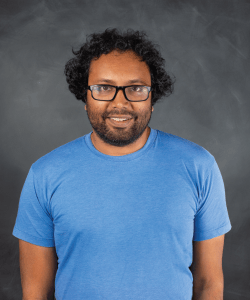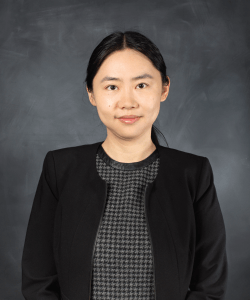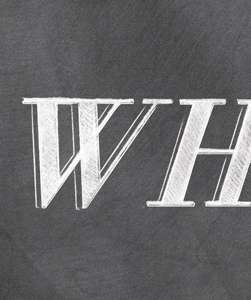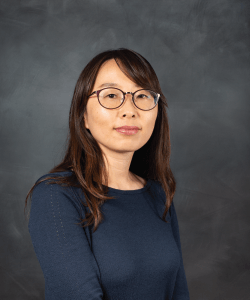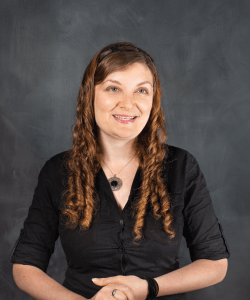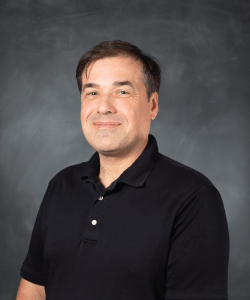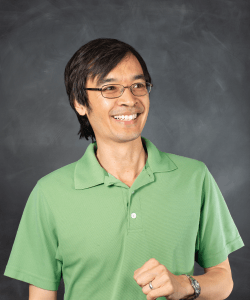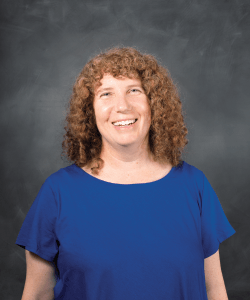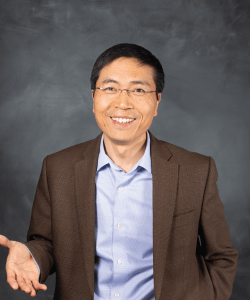SCIENTISTS IN THE DIVISION OF PHYSICAL SCIENCES ARE ON A QUEST TO SOLVE THE SEEMINGLY IMPOSSIBLE, STARTING BY ASKING, “WHAT IF…?” THEIR ANSWERS LEAD TO BREAKTHROUGHS THAT ARE IMPROVING DAILY LIVES, PRESERVING THE HEALTH OF THE PLANET AND REVEALING THE MYSTERIES OF THE UNIVERSE.

Click each image above to learn more
WHAT IF WE COULD MAKE SPACE TOURISM AND FLIGHTS TO MARS SAFE BY PREDICTING SPACE WEATHER?
With the advent of space tourism and a greater reliance on satellites, understanding space weather is becoming increasingly important to our society. Vassilis Angelopoulos, a professor in the Department of Earth, Planetary, and Space Sciences, studies space weather and how it can be predicted. His work could lead to an early warning system that would not only protect technology here on Earth, but allow safe travel between planets.
WHAT IF ROBOT BEES COULD PREVENT FAMINE?
Pollinating bees are crucial to our food supply yet are increasingly endangered. Mathematics professor Andrea Bertozzi is designing algorithms for autonomous robots, like robot bees, so that a group of them can “swarm” around a crop field for pollination purposes.
WHAT IF EINSTEIN’S THEORY OF RELATIVITY IS INCOMPLETE?
Astrophysicist Andrea Ghez, director of the UCLA Galactic Center Group, is using Adaptive Optics to study the movement of stars and the supermassive black hole at the center of our galaxy. This work is advancing our understanding of gravity, which cannot be fully explained by Einstein’s theory of general relativity.
WHAT IF OUR CITIES COULD ADAPT TO CLIMATE CHANGE AND BECOME ENVIRONMENTALLY SUSTAINABLE?
Research by UCLA climate scientists, led by professor Alex Hall in the Department of Atmospheric and Oceanic Sciences, projects that California will experience a much greater frequency of drought and flood by the end of the century. Hall is using his models to convince decision-makers of the need for sustainable environmental policies that would allow communities to weather climate change, and begin to reverse it.
WHAT IF THE POWER OF PHYSICS COULD CONTROL MOLECULES THAT IMPROVE COMPUTING?
UCLA physicists, led by professor Eric Hudson, have pioneered a method for creating and controlling unique molecules that could eventually have applications in computing. The discovery could ultimately be used to create a quantum computer capable of quickly performing calculations, such as drug and material design, which are beyond the reach of even supercomputers.
WHAT IF WE COULD STOP PROSTATE CANCER IN ITS TRACKS?
Chemistry professor Mike Jung has created molecules in his lab that have become new drugs that are allowing men with prostate cancer, the most common cancer among men in the U.S., to live longer and healthier lives.
WHAT IF EVERY SCIENTIST HAD THE TOOLS TO UNLOCK THE SECRETS OF LIFE?
Researchers led by UCLA assistant professor of chemistry and biochemistry Sriram Kosuri have pioneered a new technique that could enable scientists in any typical biochemistry laboratory to make their own gene sequences for about $2 per gene instead of the current price tag of between $50 and $100 per gene. By making the process more affordable, a greater number of scientists will be able to use gene sequencing to screen for genes’ roles in diseases and important biological processes.
WHAT IF WE COULD USE MEASUREMENTS OF GENETIC MATERIAL TO BETTER UNDERSTAND DISEASES?
Assistant professor of statistics Jingyi (Jessica) Li conducts research at the intersection of statistics and biology. She and her research team develop new statistical methods that serve as effective tools for biomedical researchers to uncover hidden information from genomic data, such as identifying important genes associated with various animal tissues and cells; discovering and quantifying mRNA from RNA sequencing data; and capturing and investigating complex gene interactions.
WHAT IF WE COULD PREDICT LANDSLIDES AFTER AN EARTHQUAKE?
Assistant professor of geology Seulgi Moon was part of a team that devised a mathematical model to identify unstable hills and mountains prone to landslides following an earthquake. Their work is helping to determine whether it is safe to return to an area after an earthquake and helping builders and planners identify safer building zones.
WHAT IF THE SUN HAS A LONG-LOST TWIN?
Most if not all stars are binary, meaning there are two of them at birth, but decades of sky surveys have yet to find our Sun’s long-lost twin. Professor Smadar Naoz in the Department of Physics & Astronomy is studying the complex interactions between planets and host stars when a stellar companion is present. Her research aims to uncover new information about the evolution of our solar system and that of multi-planet systems elsewhere in the Universe.
WHAT IF WE COULD CURE BIG DISEASES BY STUDYING THE SMALLEST THINGS?
Assistant professor Jose Rodriguez pioneered a technique called micro-electron diffraction (MicroED). His lab in the Department of Chemistry and Biochemistry focuses on amyloid proteins, which are responsible for neurodegenerative disorders like Alzheimer’s and Parkinson’s disease. With MicroED, electrons can now be used to pinpoint the exact location of atoms in these disease-causing prions, offering exciting new prospects for treatment. The technique is more cost-effective and accessible, meaning scientists around the world can use the technology to collaborate in finding cures for an array of diseases.
WHAT IF WE COULD MONITOR THE EFFECTS OF CLIMATE CHANGE ON PLANTS AROUND THE WORLD?
Atmospheric and Oceanic Sciences professor Jochen Stutz hopes to monitor the health of all plant life on Earth by developing technology that measures the light emitted during photosynthesis (known as solar induced fluorescence). Stutz believes that measuring this fluorescence can provide scientists with a more accurate picture of how plants react to climate change and how this influences our planet’s health.
WHAT IF THE IMPROBABLE WERE POSSIBLE?
The 200-year-old Navier-Stokes equations explore how all fluids behave and are used to model everything from ocean currents to the flow of blood in the body. At our current level of understanding, it is possible (though highly improbable) that fluids could explode by acquiring velocities so large that the laws of fluid dynamics no longer apply. The extreme challenge for theoretical mathematicians like Terence Tao is to determine if the Navier-Stokes equations always have solutions that last for indefinite periods of time. Whoever is the first to prove or disprove this stands to win a $1-million Millennium Prize endowed by the Clay Mathematics Institute.
WHAT IF WE COULD CHARGE AN ELECTRIC CAR IN FIVE MINUTES?
Professor of chemistry and biochemistry Sarah Tolbert uses chemistry to control the structure of materials from the level of atoms all the way up to macroscale, which allows her to create materials with fundamental new functionality. For example, she can make batteries that can charge in just a few minutes and window glass that doesn’t conduct heat so that it keeps the cold out in winter.
WHAT IF WE COULD GIVE ROBOTS COMMON SENSE?
Professor Song-Chun Zhu leads the UCLA Center for Vision, Cognition, Learning, and Autonomy, which is striving to develop a statistical framework for general artificial intelligence. He hopes to enable physical robots and virtual agents to represent, acquire and reason with common sense in daily living, such as making coffee and shaking hands.


